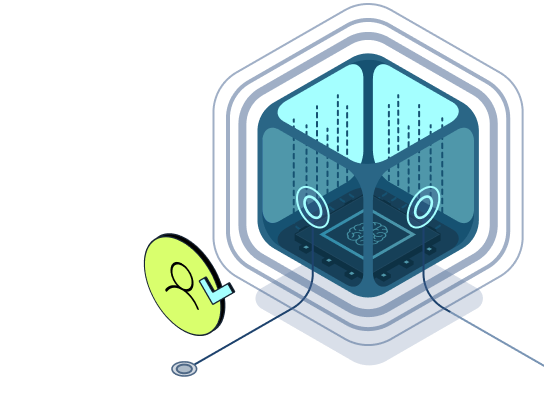Time travel
One of the great things about the internet is that it allows you to travel back in time.
Whenever you feel like, you can journey to a specific moment over the course of the last 25 years or so. Read an article from 2004, and it’s like you’re peering through a window into that world. If you squint a little, then you can just about gauge the mood on the other side.
What worried people back then? What did they see coming around the corner?
Sometimes you don’t even need to go that far back to find a completely different landscape.
Travel back six months from today and you’ll find a very strange world indeed. A world that existed before news websites and Twitter feeds first whispered rumours of a virus emerging from a market in Wuhan.
Some articles from the end of 2019 look a little naive from our vantage point in the post-covid-19 world. Reading them, you feel like a member of the audience in a theater, urging the next victim in a horror flick not to run upstairs.
But others haven’t aged as badly.
Here at Licel, we’ve been thinking and talking a lot about IoT recently. And because of that, we’ve done a bit of time travel ourselves. We’ve taken a look at some of the IoT trend pieces for 2020 that were written in the weeks leading up to Christmas last year.
As we read them, we realized something. In some ways, the impact of covid-19 has been to speed up IoT trends rather than render them meaningless.
So, we thought we’d reflect on the world of IoT halfway through 2020.
What impact has covid-19 had on IoT? And what lessons can we learn about keeping connected devices secure?
Covid-19 and its impact on the Internet of Things
Before we’d even heard of the coronavirus, analysts were predicting that 2020 would be a big year for the connected home. Little did they know that we’d be spending quite so much time within our own four walls.
The fact that we are has been a bit of a boon for the growth of connected devices. There was already a trend toward remote working, of course. But the recent period of enforced isolation has the look of a “no going back” moment.
Let’s say we are able to get some way toward the life we knew in the next few months. Will we want it to be exactly how it was before?
Take the following example:
If you live in a big city like London or New York, then commuting for two hours or more each day might have felt fairly normal. But now you have those two hours for yourself.
You’ve got time to go for a run in the morning. You’re getting to spend more time with your kids. And you’ve seen that you can work just as well from home.
Telling you to go back to the old routine for a full five days each week might be a tough sell for your boss.
There are plenty of businesses that could profit from us spending more time at home, too. Consumer IoT suppliers are re-focusing on keeping us all connected, entertained and educated. Teleconferencing has been a defining feature of our covid-19 confinement. And Google and Amazon want to take advantage. They’re positioning their smart speakers as the perfect tool for anyone serious about turning their study into a mini office.
Indeed, the rise of the smart speaker was being mooted as one of the key IoT trends for 2020, even before covid-19. Now - in a world where remote working is the norm - an all-in-one speaker and visual display that’s linked to other connected devices seems even more attractive.
Our new routines have changed the evolution of IoT in other ways, too. People are exercising more. Their home has become their gym. And during lockdown, many saw a run outside as an escape. All of this has been great news for producers of fitness wearables.
Sticking with exercise, the growth in cycling has also got some people re-thinking what the smart city could look like. A lot has been written about the driverless car and its smart sensors contributing to how a city runs. But imagine if the growth in cycling (as a means to avoid public transport) results in smarter, greener cities in the coming years.
Whether your focus is inside or outside the home, there’s one constant that will power the growth of IoT in both settings - 5G.
5G and data as power
If you go back and read these end of year trend pieces about IoT in 2020, you’ll see 5G was at the top of almost every list.
In one such list in Forbes, Daniel Newman writes that “the true value of 5G won’t be limited to phones. Just about every industry that touches our daily lives will be transformed – for the better – by the technology evolution that will define 2020.”
5G is seen as being a key player in transforming the smart city from a dream to reality. That’s because its increased speed will enable connected environments to more or less run on their own. As they do so, they’ll be able to share valuable data. And that will allow machine learning tools to learn and improve, making cities more efficient.
This increased speed means there’s room for even more devices. More devices means more business opportunities.
So, even more apps will be created in the coming years to profit from this new landscape.
Network providers could be forgiven for switching their attention elsewhere in recent months. But there are signs that they’re more keen than ever to put 5G technology in place. One reason for this is the demand that’s being placed on networks from us all being home so much.
For example, in the US Verizon has both fixed and mobile 5G live in some areas already. They’ve announced an extra $500 million to speed up the company’s switch to 5G.
The key to 5G is data. More than ever, intelligent use of data is the key to success. It helps cities and states to run more effectively. And it gives companies an advantage over their competitors. The need for data is why edge computing is often mentioned alongside 5G as a key component in the future of IoT. After all, edge computing helps you to leverage real-time data sets rather than trying to find what you need in a more-centralized cloud.
It’s right that we’re excited about this future for IoT. But the danger is that we’re not the only ones who see a world of opportunities we can profit from.
The evolution of IoT cyberattacks and how to block them
So, we’ve seen that covid-19 hasn’t stopped the rush toward a world with an ever-increasing number of connected devices. In fact, if anything the effect of the last few months has been to see them as even more essential than before.
There were 2 billion smart devices in the world in 2006. In 2015, there were 15 billion. In 2020, this has jumped to 200 billion.
Or put another way, there are now 26 smart devices for every human being on earth.
But as we’ve said before on this site, the more devices that are connected to the internet, the more opportunities there are for bad actors. The architecture of IoT is typically quite centralized. And that means that if a bad actor can find an unprotected gap somewhere - whether that’s in your connected home or a business - they can squeeze through.
From there, they can access the whole system.
We’ve already said that the data within an IoT network is the key to success. And without this meaningful data, there’s no sense to IoT. But there are signs that bad actors are getting smarter with how they use this data, too.
If a hacker manages to break into your connected home network, then they can learn your daily patterns. They can track your movement. And they can time their attacks for when you’re most vulnerable.
That might be manipulating your alarm system or door lock when you’re on holiday. Or it could be hacking your connected car when you’re in a remote area far from home.
In other words, when you’re much more likely to have no other choice but to pay the ransom they’re demanding.
The danger is that security is often an afterthought when people are building their network of connected devices. But really it should be central to your planning from the outset. That means putting end-to-end security solutions in place to protect critical applications. And it means securing the links between these apps and the server. Because that’s where you’re most at risk from man-in-the-middle attacks.
Blockchain can help to secure data through the use of a decentralized system. But it’s also important to encrypt and hide the sensitive cryptographic processes that take place inside individual apps.
That way bad actors can’t find a way inside and can’t tamper with any of the key material or logic within them.
When we add robust protection to IoT, then we can truly look forward to the world of opportunities that it opens up. After all, IoT has the potential to navigate a route out of the covid-19 crisis. Using data on a large scale (but in a safe way) can help us to learn and be better prepared for other outbreaks in the future.




